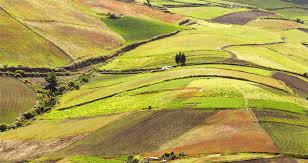Species Diversity, Aspects and Measure of Species Richness
Species diversity refers to the variety of species. Aspects of species diversity can be measured in a number of ways. Most of these ways can be classified into three groups of measurement: species richness, species abundance and taxonomic or phylogenetic diversity.
Measure of species richness, count the number of species in a defined area and measure of species abundance, and sample the relative numbers among species.
A typical sample may contain several very common species, a few less common species and numerous rare species. Measures of species diversity that simplify information on species richness and relative abundance into a single index are in extensive use.
Species Diversity
Species diversity refers to the variety of species. Aspects of species diversity can be measured in a number of ways. Most of these ways can be classified into three groups of measurement: species richness, species abundance and taxonomic or phylogenetic diversity.
Measure of species richness, count the number of species in a defined area and measure of species abundance, and sample the relative numbers among species. A typical sample may contain several very common species, a few less common species and numerous rare species.
Read Also : Wastewater Treatment and Guideline Standards
Measures of species diversity that simplify information on species richness and relative abundance into a single index are in extensive use. Another approach is to measure taxonomic or phylogenetic diversity, which considers the genetic relationships between different groups of species.
These measures are based on analysis which results in a hierarchical classification usually represented by a ‘tree’ that depicts the branching pattern which is thought to best represent the phylogenetic evolution of the taxa concerned.

Different measures of taxonomic diversity emphasize various toxic characteristics and relationships. The species level is generally regarded to be the most appropriate to consider the diversity between organisms.
This is because species are the primary focus of evolutionary mechanisms and therefore are relatively well defined. At the global level, an estimated 1.7 million species have been described to date; current estimates for the total number of species in existence vary from five million to nearly 100 million.
In Australia, with an estimated total number of native species (excluding bacteria and viruses) of 475 000, about half are known, but only a quarter formally described. Estimations of the number of species can be expected to improve with study into a number of poorly assessed groups: namely microorganisms, fungi, nematodes, mites and insects.
On a broad scale species diversity is not evenly distributed across the globe. The single most obvious pattern in the global distribution of species is that overall species richness is concentrated in equatorial regions and tends to decrease as one moves from equatorial to polar regions.
In general, there are more species per unit area in the tropics than in temperate regions and far more species in temperate regions than there are in Polar Regions. In addition, diversity in land ecosystems generally decreases with increasing altitude.
Other factors which are generally believed to influence diversity on land are rainfall patterns and nutrient levels. In marine ecosystems, species richness tends to be concentrated on continental shelves, though deep sea communities are also significant.
Read Also : On-site Municipal Wastewaters Treatment
In summary, species diversity refers to the variety of species. Species diversity can be measured by species richness, species abundance and taxonomic or phylogenetic diversity; the most extensive used being that which simplify information on species richness and relative abundance into a single index.
Diversity between organisms is best considered at the species level. On a broad scale species diversity is not evenly distributed across the globe, but in the following order: Tropics > Temperate regions > Polar regions.
Other factors that influence diversity on land are rainfall patterns and nutrient levels. In marine ecosystems however, species richness tends to be concentrated on continental shelves.



